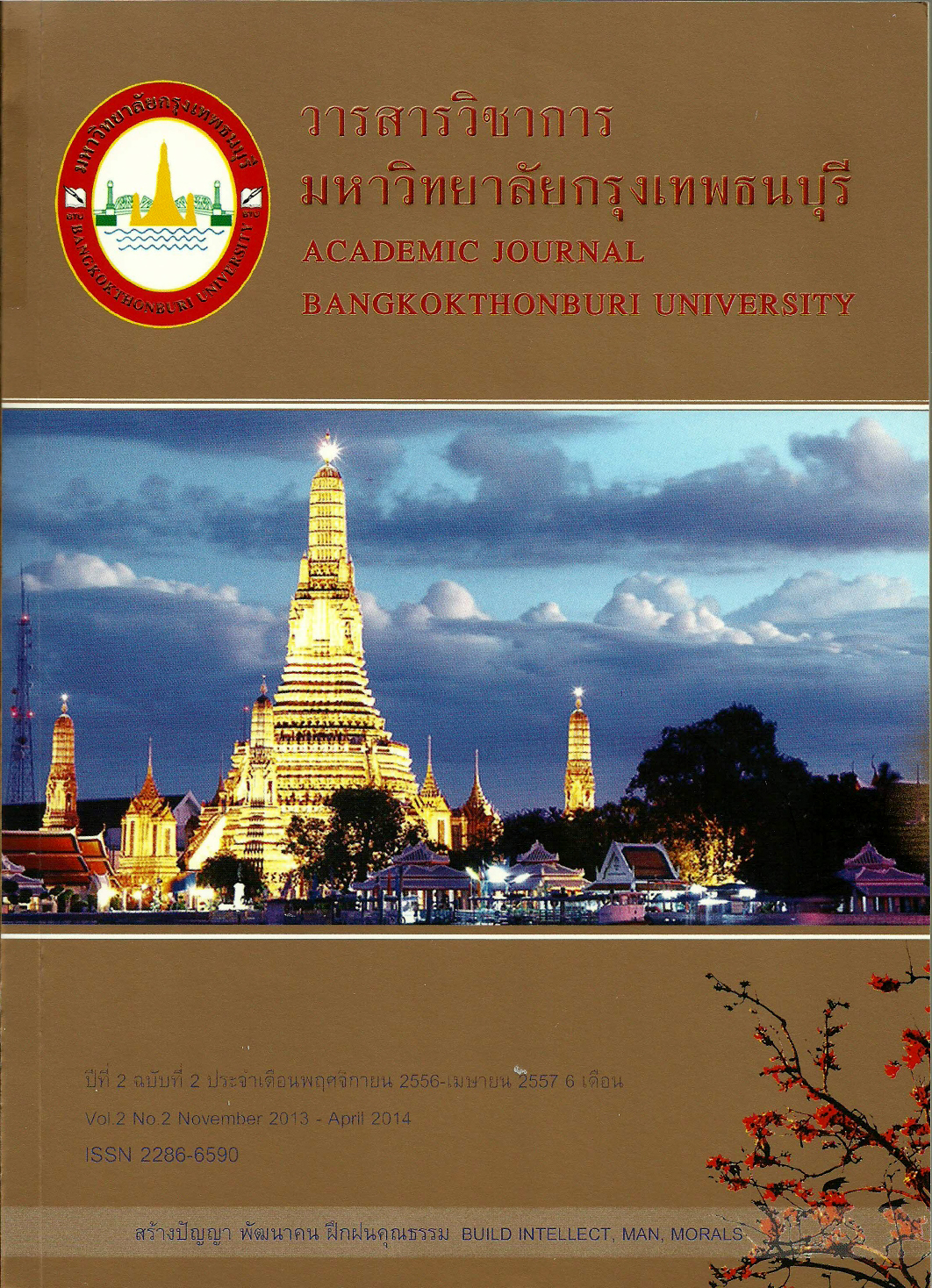การพัฒนารูปแบบการดำเนินงาน แบบมีส่วนร่วมของแกนนำเครือข่ายผู้ติดเชื้อ และผู้ป่วยเอดส์ในคลินิกศูนย์องค์รวม โรงพยาบาลในจังหวัดอุบลราชธานี
Main Article Content
Abstract
การศึกษาวิจัยเรื่อง การพัฒนารูปแบบการดำเนินงานแบบมีส่วนร่วมของแกนนำเครือข่ายผู้ติดเชื้อ และผู้ป่วยเอดส์ ในคลินิกศูนย์องค์รวม โรงพยาบาลในจังหวัดอุบลราชธานี โดยมีวัตถุประสงค์เพื่อศึกษา พัฒนารูปแบบการดำเนินงานแบบมีส่วนร่วมของแกนนำเครือข่ายผู้ติดเชื้อและผู้ป่วยเอดส์ และผู้ที่ได้รับ ผลกระทบในคลินิกศูนย์องค์รวม และศึกษาการเข้าถึงบริการของผู้ติดเชื้อและผู้ป่วยเอดส์ และผู้ที่ได้รับ ผลกระทบ โดยศึกษาในกลุ่มแกนนำและพี่เลี้ยงที่ให้บริการในคลินิกศูนย์องค์รวม จากโรงพยาบาลศูนย์ โรงพยาบาลทั่วไป และโรงพยาบาลชุมชน จำนวน 15 แห่ง ในจังหวัดอุบลราชธานี ในระหว่างวันที่ 1 ตุลาคม 2554 ถึง 30 กันยายน 2555 เครื่องมือที่ใช้ในการวิจัย ประกอบด้วย ข้อมูลเชิงปริมาณ ข้อมูลทุติยภูมิ จาก โปรแกรมการจัดเก็บข้อมูลเอดส์ NAP Program และข้อมูลจากศูนย์องค์รวมของแกนนำเครือข่ายผู้ติดเชื้อ และผูป้ ว่ ยเอดส ์ ขอ้ มูลเชิงคุณภาพ ไดจ้ ากการสังเกต การสัมภาษณเ์ จาะลึกรายบุคคล การสนทนากลุม่ และ การถอดบทเรียนการดำเนินงานของเครือข่าย การตรวจสอบข้อมูลแบบสามเส้า การวิเคราะห์ข้อมูลโดยใช้ เทคนิคการจัดหมวดหมู่ การตีความและสร้างข้อสรุป
ผลการศึกษา พบว่า รูปแบบการให้บริการแบบมีส่วนร่วมแบ่งได้เป็น 4 รูปแบบ:แบบที่ 1 เข้ามา มีส่วนร่วมให้บริการที่ศูนย์องค์รวมเฉพาะวันที่มีคลินิก จำนวน 1 แห่ง แบบที่ 2 ติดตามดูแลเพื่อนสมาชิก ครอบคลุมทุกมิติ (เศรษฐกิจ สังคม และจิตใจ) จำนวน 4 แห่ง แบบที่ 3 มีส่วนร่วมในการจัดระบบบริการ คลินิกศูนย์องค์รวมร่วมกับทีมสหวิชาชีพ จำนวน 8 แห่ง และแบบที่ 4 มีส่วนร่วมในการทำงานเชิงนโยบาย และการจัดระบบบริการในคลินิกศูนย์องค์รวม จำนวน 2 แห่ง พบระดับการมีส่วนร่วมของแกนนำผู้ติดเชื้อ และผู้ป่วยเอดส์กับพี่เลี้ยงและทีมสหวิชาชีพขึ้นอยู่กับระดับความรู้ ความสามารถเฉพาะบุคคล ความรู้ส่วน ที่ขาดประกอบด้วยเรื่องสุขภาวะทางเพศ เพศวิถี เพศสภาวะ อนามัยเจริญพันธุ์, สิทธิอนามัยเจริญพันธุ์, การทบทวนงานอย่างต่อเนื่อง การเยี่ยมบ้าน งบประมาณการทำงานเชิงรุกถูกปรับลด จำนวนแกนนำลด ลงเพราะสุขภาพแข็งแรงไปประกอบอาชีพส่วนตัว สัดส่วนของพี่เลี้ยงและแกนนำอาสาสมัครไม่สัมพันธ์กับ ผู้มารับบริการ การมีส่วนร่วมในการให้บริการของอาสาสมัครแกนนำทำให้ผู้ติดเชื้อและผู้ป่วยเอดส์เปิดเผย ตัวและมารับบริการเพิ่มขึ้น
ข้อเสนอแนะ ควรมีการเพิ่มและจัดกรอบอัตรากำลังของพี่เลี้ยงต่อสัดส่วนของแกนนำให้เพียงพอ ต่อการให้บริการ การพัฒนาศักยภาพทีมงานที่ต่อเนื่องในประเด็นสุขภาวะทางเพศ เพศสภาวะ เพศวิถี อนามัยเจริญพันธุ์ รวมทั้งการเพิ่มความเข้มข้น ทุกขั้นตอนในการมีส่วนร่วมของแกนนำ เพื่อสร้างการยอมรับ และช่วยลดการตีตราผู้ติดเชื้อและผู้ป่วยเอดส์ในชุมชน มีการสร้าง ขยาย และดึงภาคีเครือข่ายในพื้นที่ เข้ามามีส่วนร่วมในการสนับสนุนงบประมาณดำเนินการ มีการจ้างอาสาสมัครแกนนำเป็นเจ้าหน้าที่ ในโรงพยาบาล และมีการติดตามประเมินผลโดยการถอดบทเรียน การพัฒนาศักยภาพแกนนำเป็นนักวิจัย ชาวบ้าน เพื่อพัฒนาและหารูปแบบในการให้บริการในคลินิกและการทำงานเชิงรุกเพื่อลดผู้ติดเชื้อรายใหม่ และลดการเสียชีวิตจากโรคเอดส์
Developing the participatory working program for people living with HIV and AIDS network in the holistic centres of hospitals in Ubon Ratchathani.
Objectives : to study and develop describe the participatory program of peer leaders with HIV and AIDS and a multidisciplinary team in the holistic centres and to develop program for providing care for HIV/AIDS patients and those who have been affected by HIV/AIDS to access to holistic centre services.
Methods : Peers and volunteers who helped provided services in the holistic centres in 15 community, general and regional hospitals in Ubon Ratchathani were studied during October 2011 -September 2012. Tertiary quantitative data were obtained from the NAP program database and the holistic centre databases. Qualitative data were obtained via observation, in-depth interview, group discussion and lessons learned from care networks. Data triangulation technique was used to examine the study validity. Data analysis was performed using content analysis, coding, interpretive and conclusive techniques.
Results : There were four types of participatory care services for individuals with HIV and AIDS. The first type was facilitated by PLHA peer leaders who work together with health care providers that has only one community hospital which were well connected with other hospital departments and peers with HIV being directly employed by the hospitals. The second form of all-round holistic services which peers were involved solely on the operating days of the services in order to enhance the care service for its members. Third, care service was provided at the local health care office fortnightly by multidisciplinary team from a community hospital. The last form of care service were two holistic centres which participate in the policy advocacy level to provide and make the decision in the hospital HIV/AIDS related services policies. Two clinics found in this format provided specific care for MSM and men infected with HIV, in addition to other individuals with HIV and AIDS. The limitation of peer educators and multidisciplinary team which include the limitation of PLHA knowledge in related issues such as sexuality and reproductive health, reproductive rights, and so forth. Most of the PLHA group leaders is sitting at the clinic for the group support activity more than performing a home visit.; government budgetary supporting has been reduced which interrupts the clinic hours and home visit. This might be explained by the reduced budgets, PLHA leaders who are in a good health stop volunteering at the clinic and become self-employed that make the center facing a lower standard of PLHA group leaders. However, the participation of the leaders in providing clinical services is a key factor that encourages HIV / AIDS patients to receive uninterrupted service to reduce the stigma and new infections.
Implications : In order to improve the participatory program of peer individuals with HIV and AIDS and a multidisciplinary team, key success factors include an optimal patient-to-peer ratio, academic supports for peers and volunteers with their participation in health issue, gender, sexuality, reproductive health and rights, thinking, planning, working, decision making and responsibility sharing. They have to play an important role in reducing stigma in order to make individuals with HIV and AIDS feel more comfortable disclose their status to the communities and societies. Budgets for proactive care service in communities can be enhanced by supports from local administrative organizations and parties. This support may be in the forms of the employment of peers and volunteers for the hospitals and encouragement of proactive work for prevention of HIV and AIDS at the local level. Peer leaders need to have a capacity to develop the community research to find the appropriate services for the clinic as well as working proactively to reduce new infections and reducing deaths from AIDS to reduced stigma and discrimination.


